
Above: “data privacy” by stockcatalog licensed under CC BY-SA 2.0
DCL Art Week: In Conversation with Brazilian Artists on SuperRare
Many of us hold the belief that CryptoArt and NFTs are here to stay. CryptoArt grants opportunities to both digital and non-digital artists alike while changing the way of selling and collecting art across the internet. Increasingly, people from different countries all around the world now buy and sell art as NFTs. In this exhibition curated by omentejovem and an, we showcase a group of incredible artists who are originally from or are currently based in Brazil. Coming from an emerging country with difficulties in access to technology, these artists’ work nevertheless shows great talents and promise. To initiate a conversation around the topic of NFTs in the developing countries, we asked the artists the following questions:
- What are the difficulties for artists who are based in developing countries to enter the NFT space?
- How does CryptoArt affect your life/art career?
- How does Brazilian upbringing influence your art styles and practices?
- How do you see the future of NFTs in Brazil?

Living in Brazil as a whole influences art. We are a continental country. We have a lot of culture and cultural ferment. Traveling around the country is getting to know the culture that is on the streets, everywhere.





The first big difficulty for me is the dollar. In Brazil, the dollar is highly valued and it is very difficult to gather the minimum necessary to start the mint and fall. Second, there is the language barrier. The English language is considered the universal language and in Brazil it is not taught properly if we don’t have the money to buy a course, which was my case. Fortunately, we have the Internet and online translators to help us spread our ideas in all languages. And the third is to understand the cryptoart, blockchain, ethereum and NFT market, but I believe this is a barrier that everyone needs to overcome to enter the cypto world.
So far, cryptographic art is affecting me very positively. I came back to believe in my art. I was a little discouraged despite always persevering in my artistic career which I consider my life. But seeing my art being appreciated by collectors around the world and still reaching an audience outside of social media and algorithms is invaluable and wonderful. I don’t know how long this will last, but let it be eternal while it lasts.
Living in Brazil as a whole influences art. We are a continental country. We have a lot of culture and cultural ferment. Traveling around the country is getting to know the culture that is on the streets, everywhere. Traditional education still does not see culture as it should, we are still very indoctrinated by European artistic culture. We have a culture as rich as anywhere in the world. A unique blend of different peoples, from indigenous to Africans, who reflect on everything, in popular music, cinema, visual arts and architecture. We are artistically and culturally rich and we want to tell the world more and more that we are here. And that’s why we’re pioneers in SuperRare. We will always be where the art is.
I see a future for NFT in Brazil, so it’s still very nebulous. The market is not just for creators and I really miss Brazilian collectors to strengthen our community within any market. However, our presence in the market serves as an incentive to attract more and more real stakeholders to the cryptographic world. So you have to come in willing to have a lot of fun, but also play very seriously. The art market is something beautiful and intense, we need to be completely inside it.
We have a lot of talent to show to the world, and one of my biggest goals, alongside other artists, is to give Brazilian artists more exposure in the CryptoArt scene.





Definitely one of the biggest obstacles we encounter right away is the ETH gas. Often, just the price to mint an artwork is the same as a minimum wage in many developing countries.
My life has completely changed since I met CryptoArt, not only mine, but also my family and friends that I was able to help since I joined this space.
I’m very inspired by music, and especially Brazilian music (Bossa Nova). It’s definitely something that influences my work in many ways.
We have a lot of talent to show to the world, and one of my biggest goals, alongside other artists, is to give Brazilian artists more exposure in the CryptoArt scene.
I grew up in Brasilia, Brazil’s capital that has a very modernist architecture. I think that definitely influence my aesthetic today. I also think that Brazilian’s tropical weather influence me in the use of colors.





I would say the currency exchange is not very favorable for a developing country. The gas fee sometimes might prevent someone from trying to mint their first piece since the exchange of the currency is not favorable.
It enables us to enter a world that before wasn’t very accessible if you were a digital artist. I never thought I would see my work exposed in a gallery on screens. That are a lot of talented people in the world of digital arts that have that opportunity now.
I grew up in Brasilia, Brazil’s capital that has a very modernist architecture. I think that definitely influence my aesthetic today. I also think that Brazilian’s tropical weather influence me in the use of colors. Brazil is a country of contrasts. You have in one end very rich people and the other very poor and live that contrast everyday on the streets, no matter where you go.
I would say that it would play a big role in allowing new artist to be discovered from Brazil but making a presence around the globe. Not only the field of fine arts but also with music, dance and sports.
I see a lot of empowerment for artists to reveal their full potential, that was always there, but maybe because of the lack of opportunities it couldn’t always bloom.
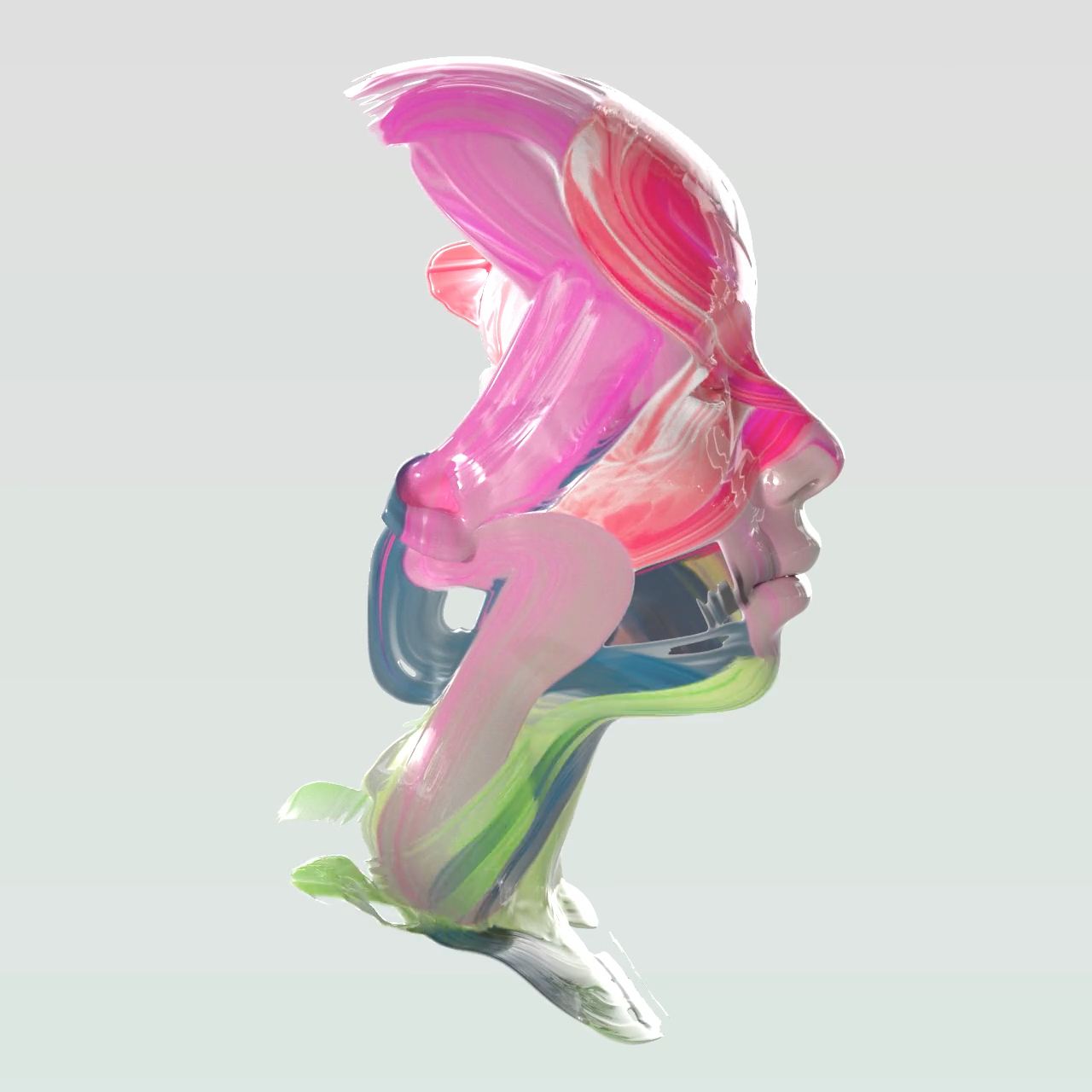
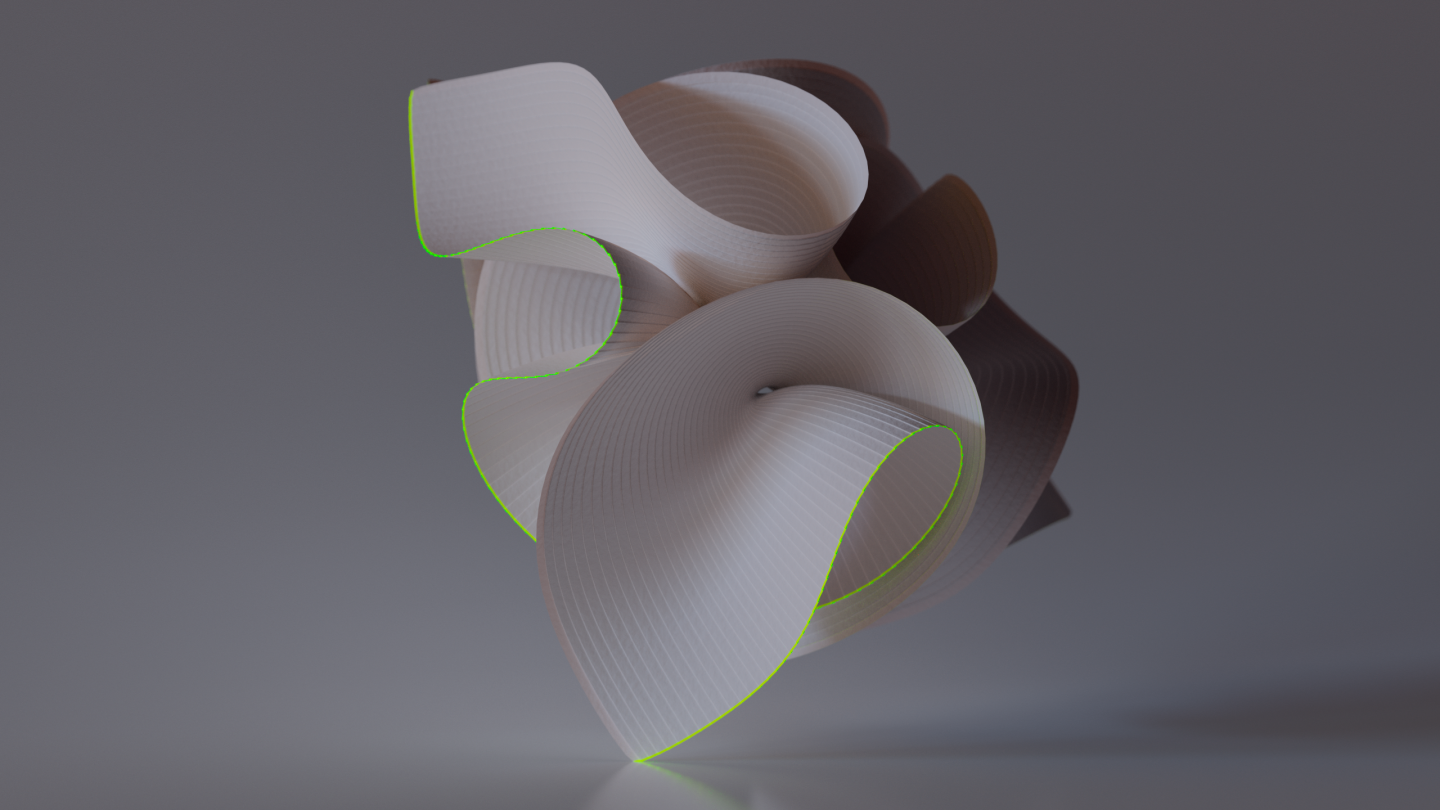
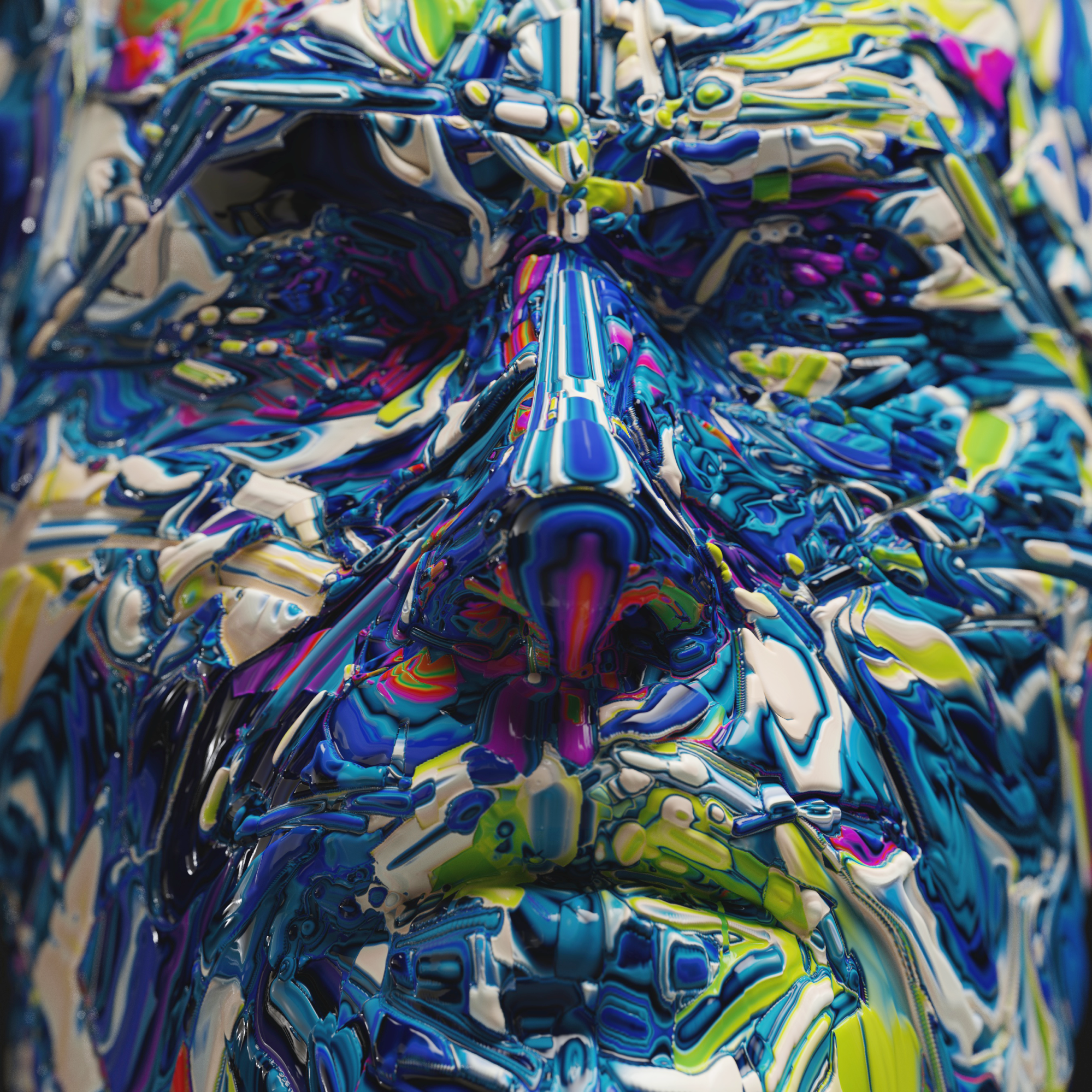
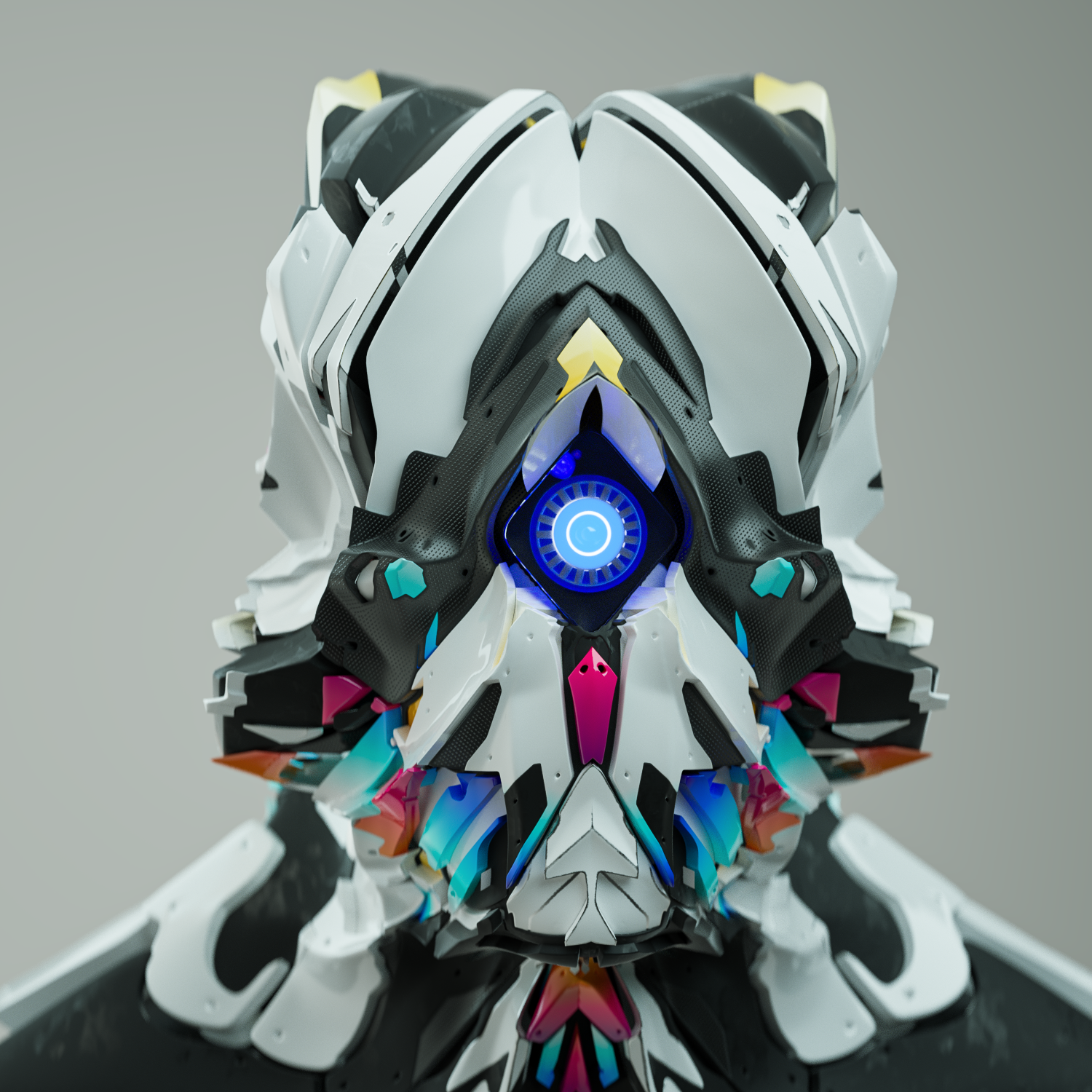
Throughout my career what I’ve found to be the hardest things was access to proper equipment, it makes everything much harder when you don’t have the proper tools to use in your craft.
It gave me autonomy to really focus my energies in my art, developing not just the techniques but also the subjectivines and the deeper questions.
I think it appears more in the process rather the style itself. It influences the resilience of the process and not relying on external forces because it might not help quite often.
I see a lot of empowerment for artists to reveal their full potential, that was always there, but maybe because of the lack of opportunities it couldn’t always bloom.
I think it’s important for artists from emerging countries to help each other and also influence more artists to get to know the CryptoArt world that favors creatives in ways we’ve never seen before.
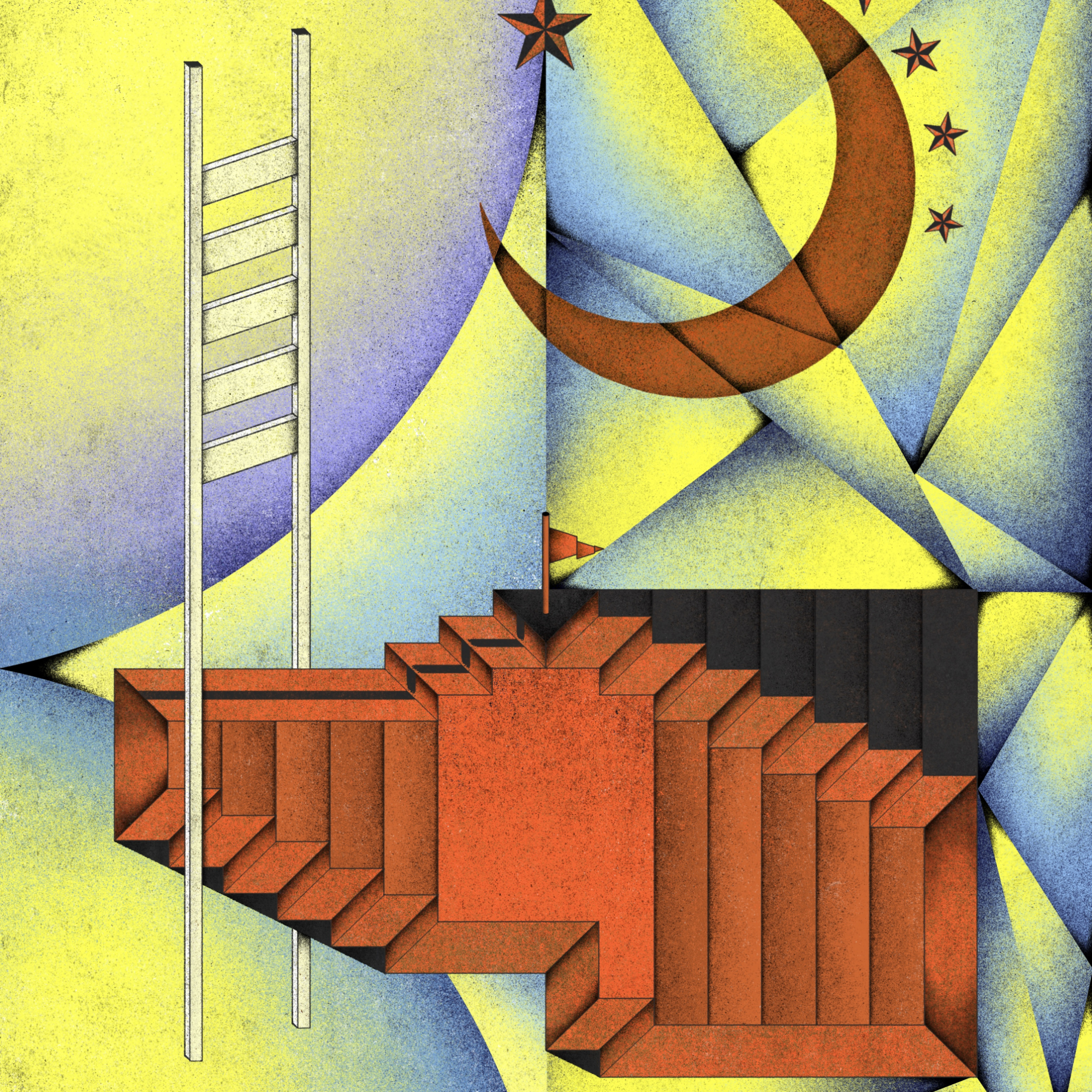
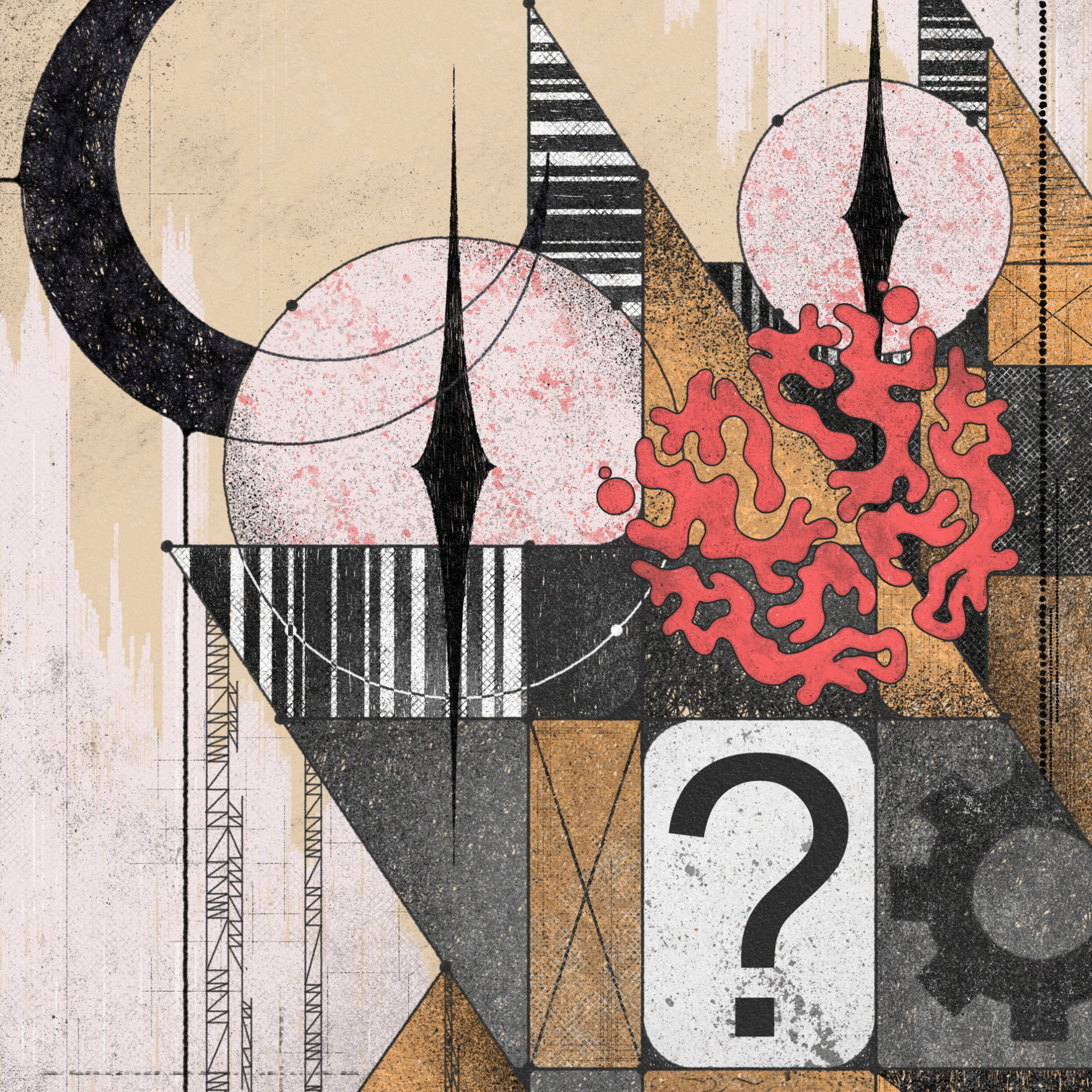
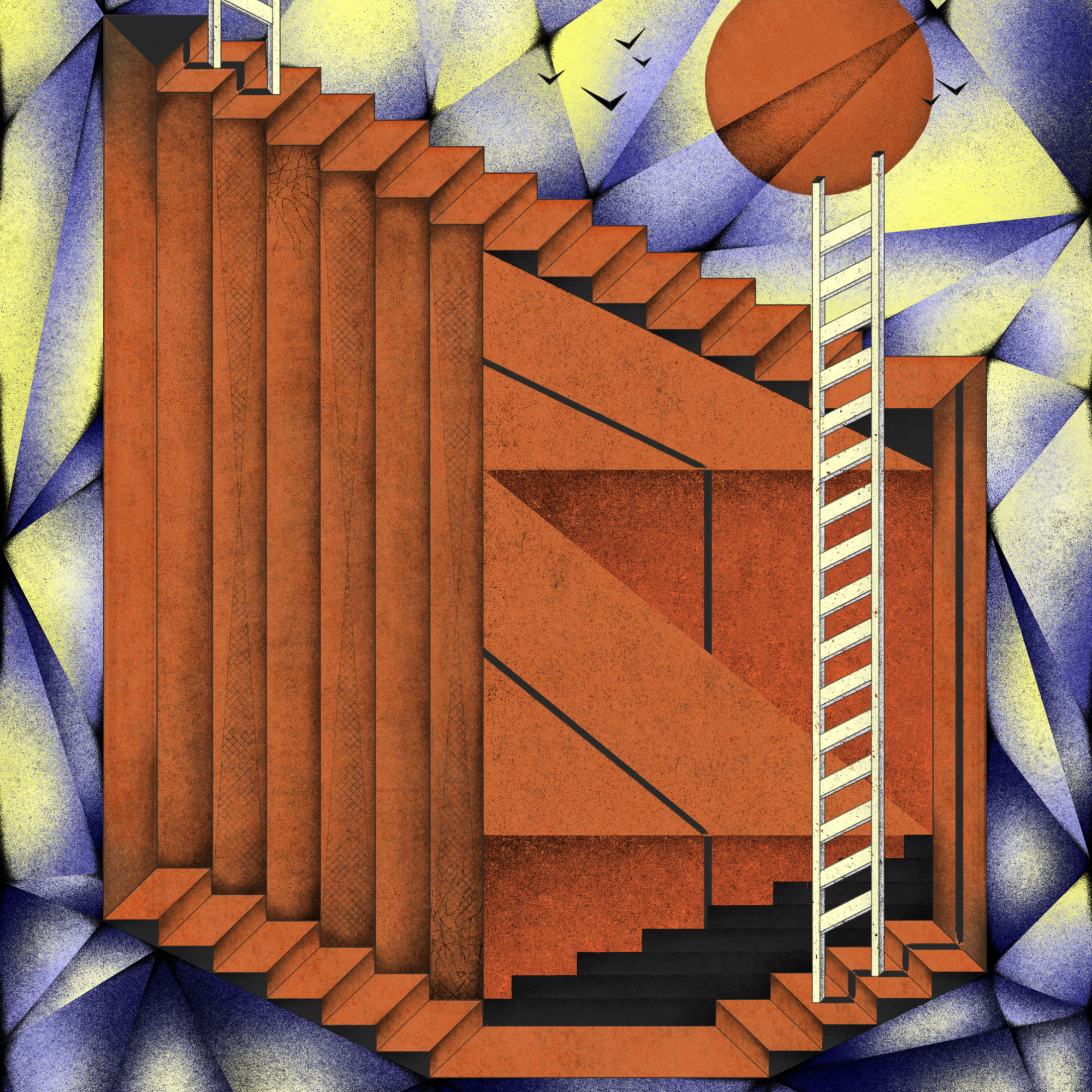
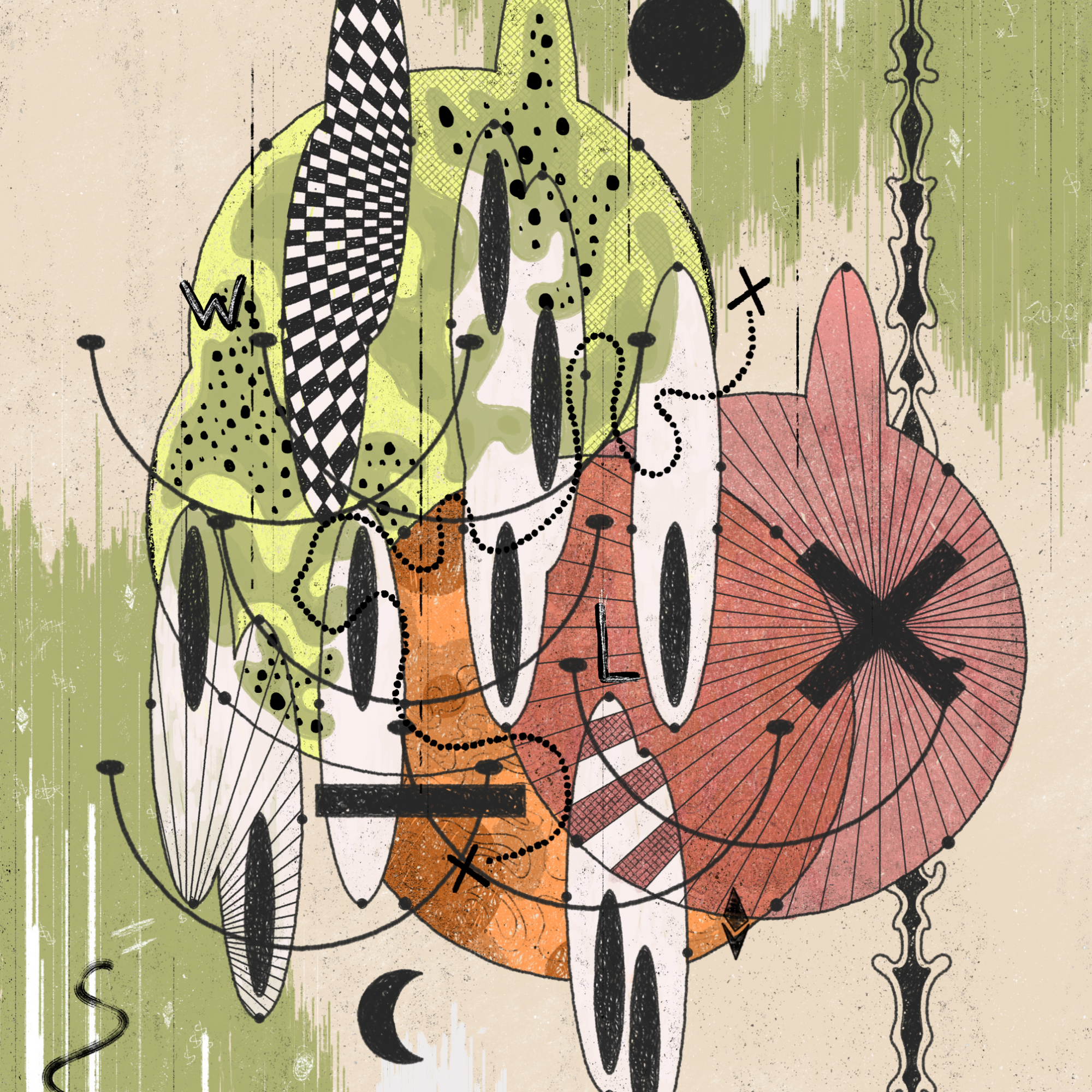
I believe the points that most hinder the coming of new 3rd world artists to the scene is the lack of accessibility, information and economic issues. Due to the bad economy in Brazil (and other countries), paying around $50 and even $130 to mint a piece of art on the Ethereum blockchain is unfeasible, considering that the minimum wage per month for Brazilians is around ~$200. Given this scenario, many of us have difficulties even to get an average computer and to be honest there are many factors that make us see less Brazilians and other 3rd world artists in the NFT scene.
It affected MANY parts, but talking about the main ones: I was able to leave the designer work and my registered job at a pharmacy to have time to focus on my progression in art and personal projects, which I didn’t even have time to think about; I was able to buy an iPad, a great tool which could not imagine being able to buy so soon and now I can help with some bills at my parents’ house. Artistic freedom, being able to express myself was one of the greatest achievements I’ve had thanks to the cryptoart movement.
To be honest, I feel almost nothing, I even remember some things that were stimulated in my childhood, mainly in abstract style, but Brazil itself is very poor in education and art education would be no different, so all I know is because I try to consume and learn more about. I feel like a very young artist, even though I’ve been in the creative field for a while, maybe my sensitivity will increase over time and I’ll be able to answer this question better in the future.
Unfortunately I’m not very optimistic about the future of NFT and crypto technology here in general in the short term/large scale, but I hope it can be more accessible and that more artists can get into the community and educate themselves about crypto and also NFTs to have some kind of artistic freedom as well as financial freedom (something that is not encouraged here at all). Given all these facts, I think it’s important for artists from emerging countries to help each other and also influence more artists to get to know this world that favors creatives in ways we’ve never seen before.
In addition to the appreciation of digital works, there is also the range and direct communication with collectors, people from all over the world that you never imagined reaching… Cryptoart provided a small space to start an artistic journey, even for those whose names were not recognised.





The difficulty is in the accessibility of information and costs. I believe that in this year of 2021, information about NFTs started to be more accessible and extent, especially in our language, to better explain the whole process and the meanings of the terms. There is also the devaluation of our currency against the dollar and ether. If we look at the value of our currency, everything becomes expensive. Therefore, there is usually support among the group of artists, so that the person can mint to their first work.
So far it has affected in a very positive sense. In addition to the appreciation of digital works, there is also the range and direct communication with collectors, people from all over the world that you never imagined reaching. And for those who also work with physical works, the NFTs also favored sales and interest on the part of the galleries. Cryptoart provided a small space to start an artistic journey, even for those whose names were not recognised.
From childhood, at least in my time, creativity was stimulated, both for the manual arts and the imagination of traditional plays. Creating games and toys themselves was part of this development. Not blocking this expressive and true phase in childhood, over time, opened the eyes to art. In addition, family support was also of great importance. They never interfered in the choices, but showed me the paths I could follow with art.
I believe it will grow, but as in the physical space, the space for artists who will get in the market and try to consolidate their name will be more difficult.
Brazil is huge and loves new technology. I really think it won’t take long until NFTs be a big part of the Brazilian culture, especially in the art scene.
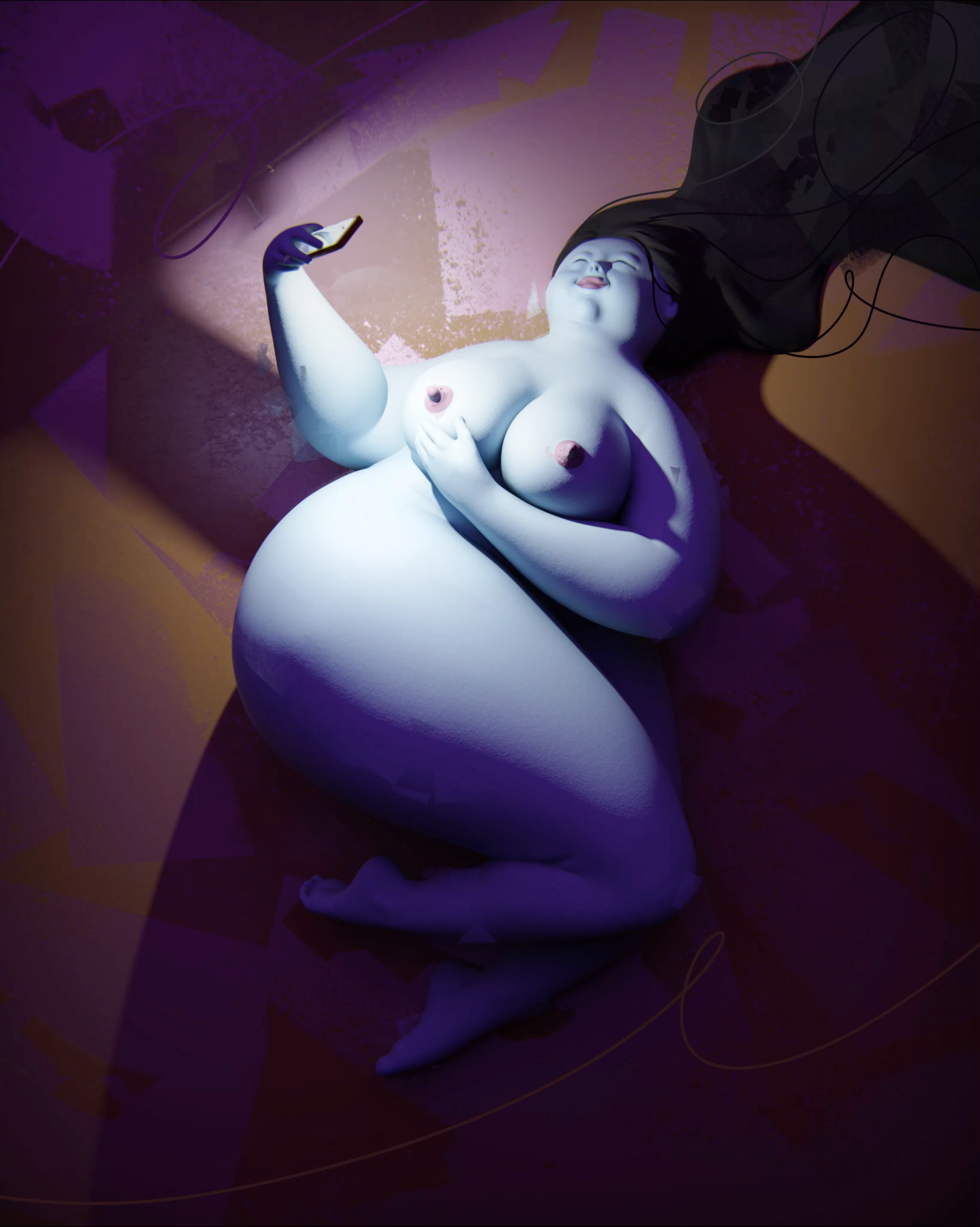
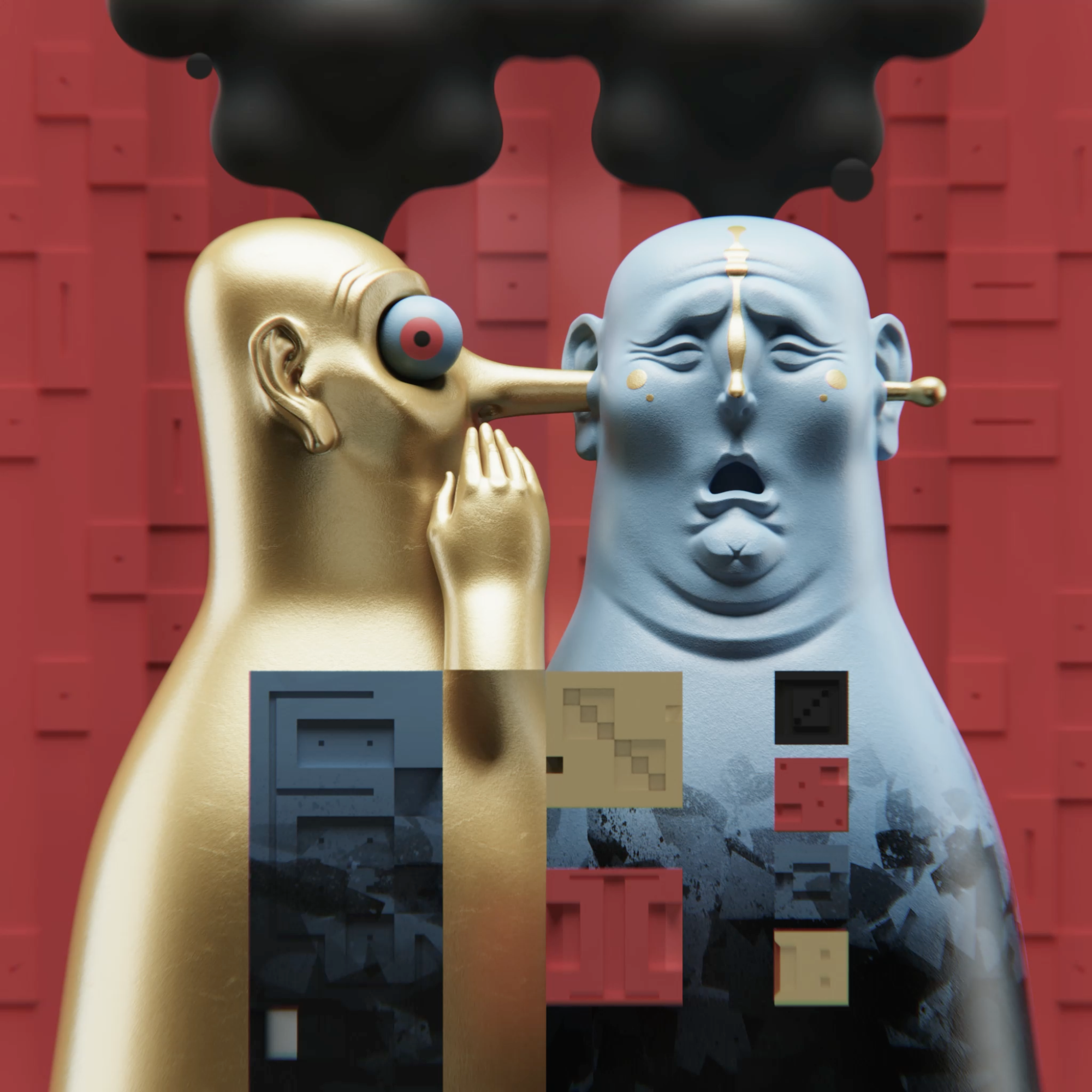
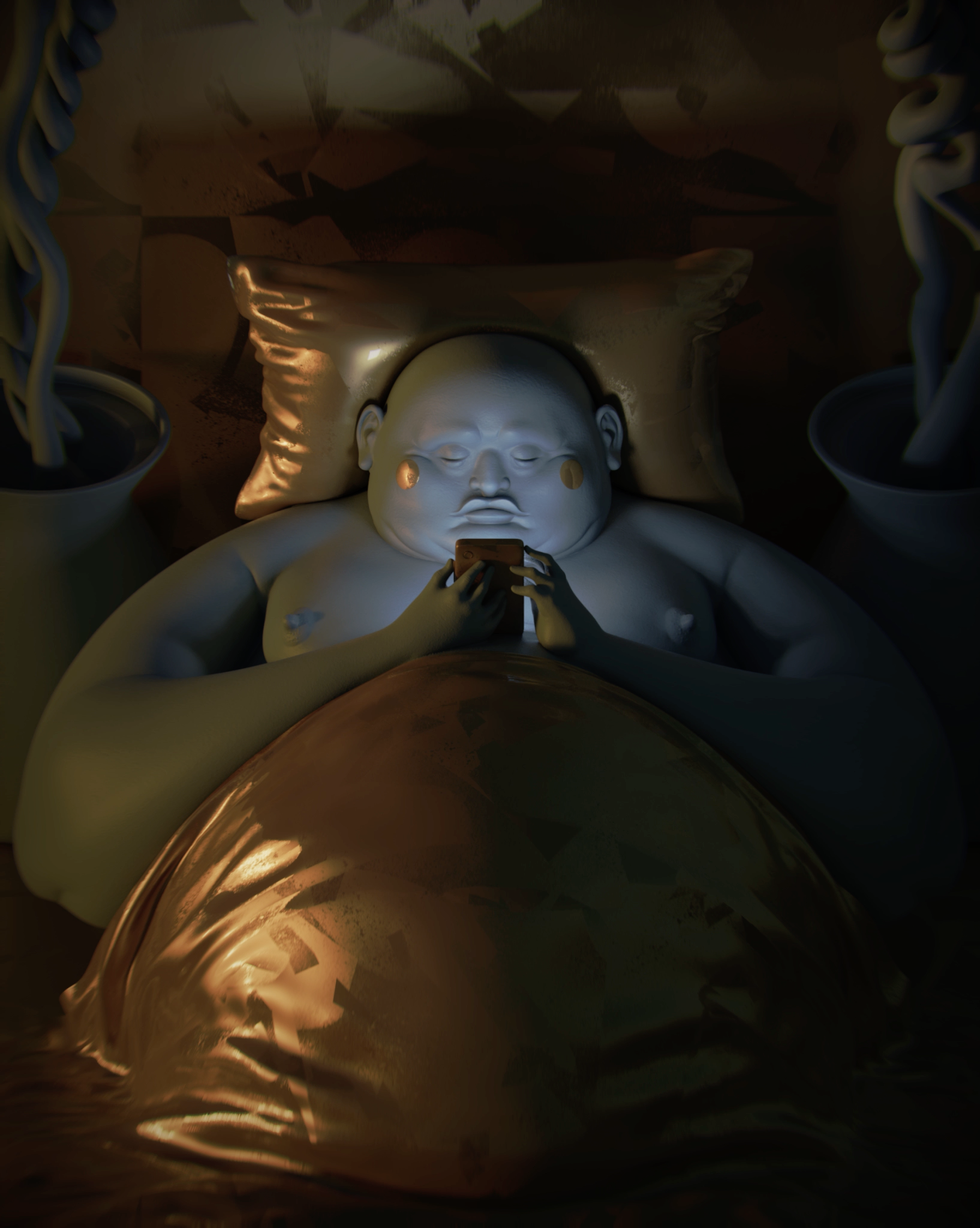
I believe the difficulties for developing countries artists to enter the NFT space are the gas prices, especially in the ETH blockchain. Also, the language barrier can play a huge role if you don’t know how to communicate in English.
I have a solid career as a graphic designer/art director, but the CryptoArt scene gives me the freedom to really show my raw art and express myself fully as an artist without following trends or briefings. Also, it gives me hope that one day I will be a full-time crypto artist and move back to Brazil to live closer to my family and friends.
I think [a Brazilian upbringing] plays a huge role, everything I lived in brazil mixed with my experience living abroad makes me who I am… and of course, that reflects on the art itself. It is hard to point any specific features, it is just a big soup made of so many diverse experiences and points of view.
Brazil is huge and loves new technology. I really think it won’t take long until NFTs be a big part of the Brazilian culture, especially in the art scene.
As much economically or geographically I might had have some disadvantages, I am lucky to have been exposed to the Brazilian Culture. It is just so rich and pulls from so many other cultures that I am a much more interesting artist, I am not afraid of using colors or being dramatic on my themes and it gives me a flavor nobody else has.
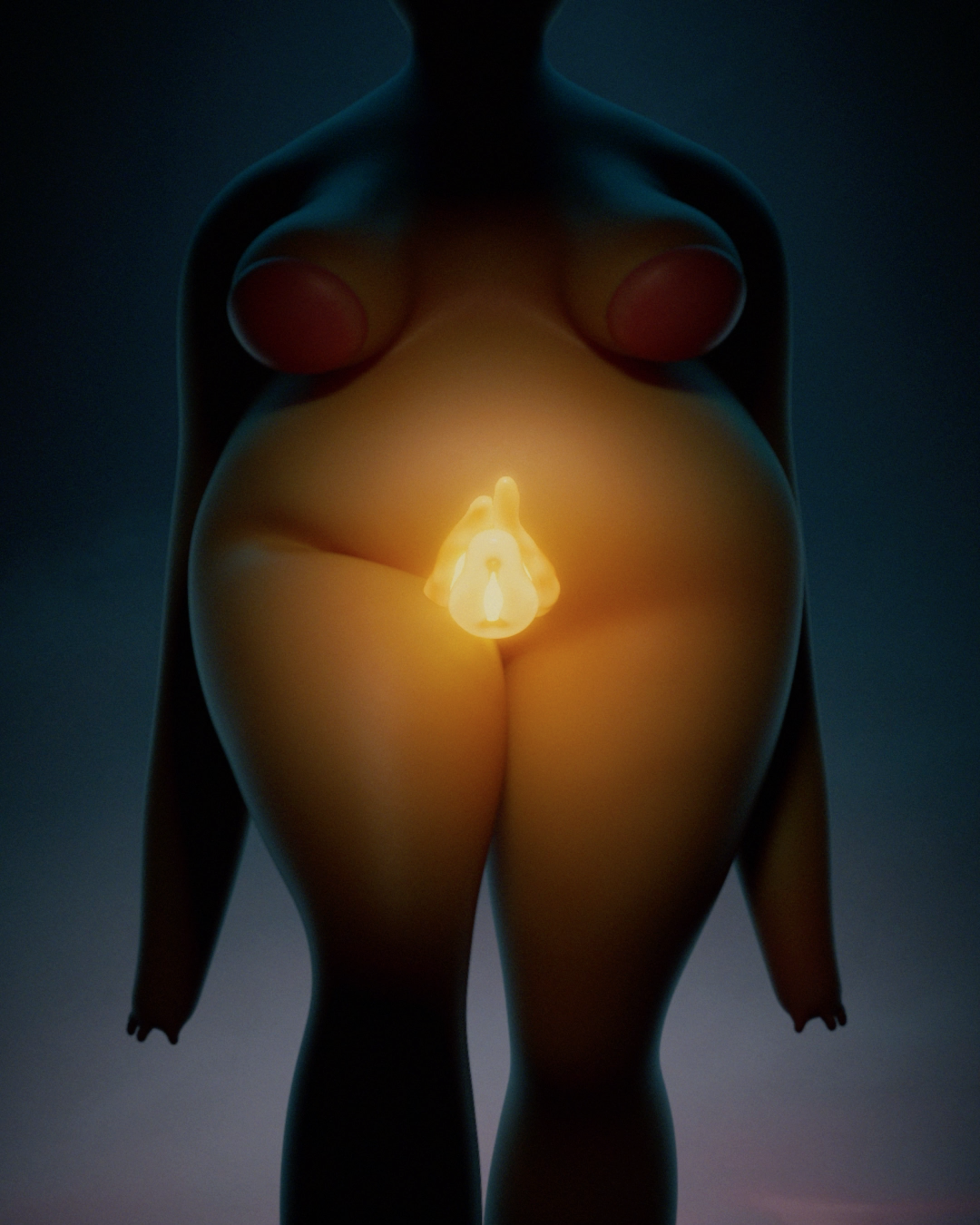
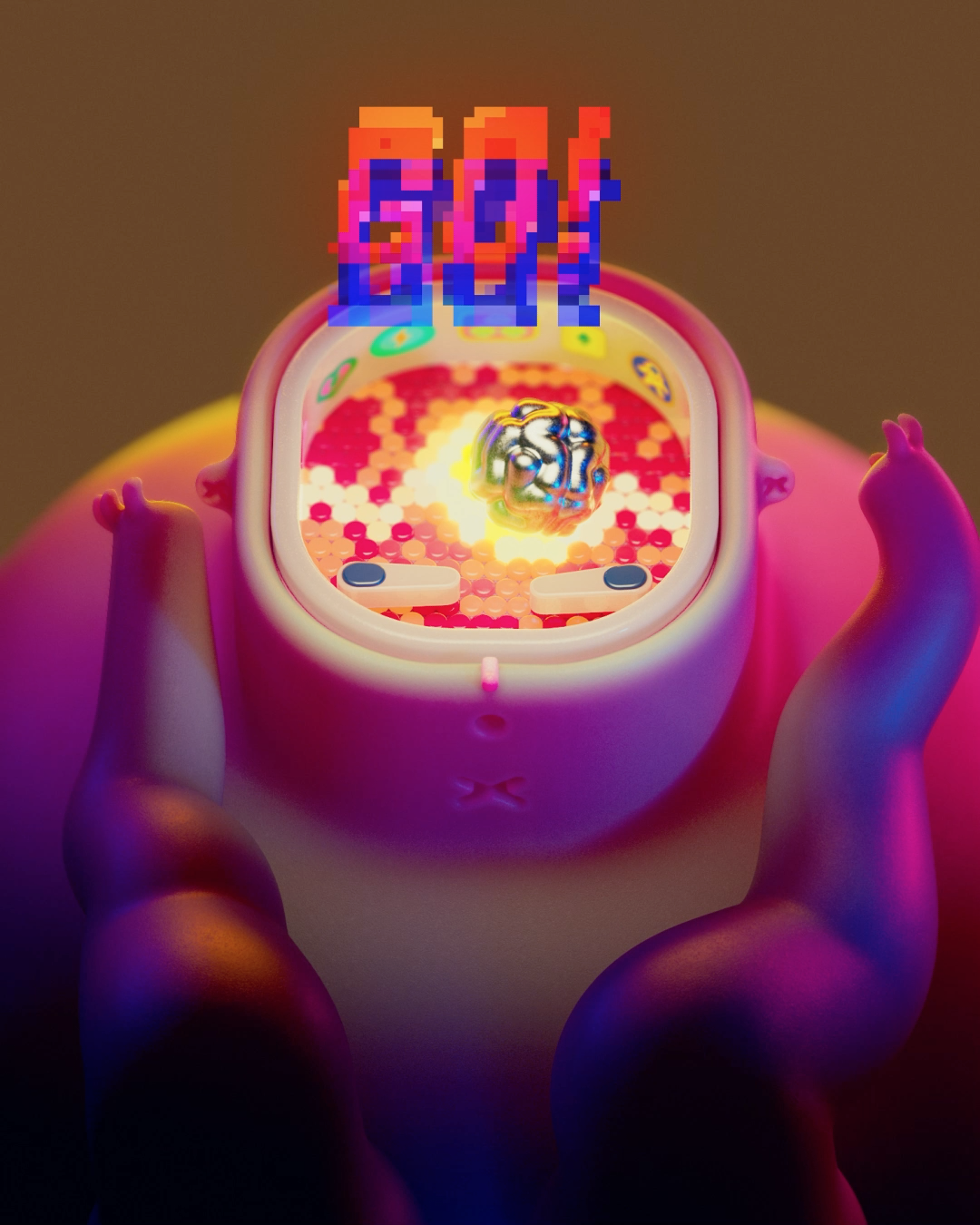
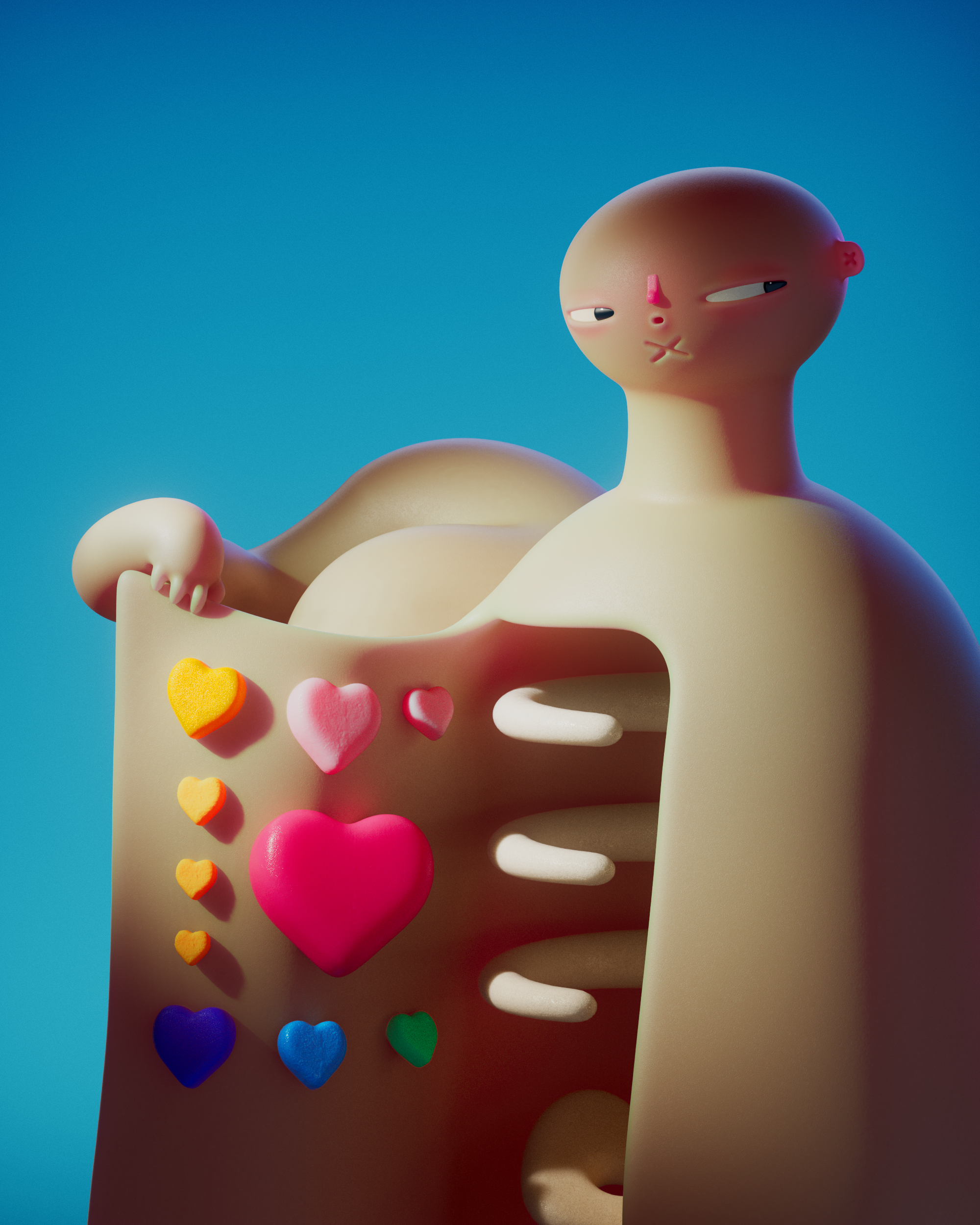
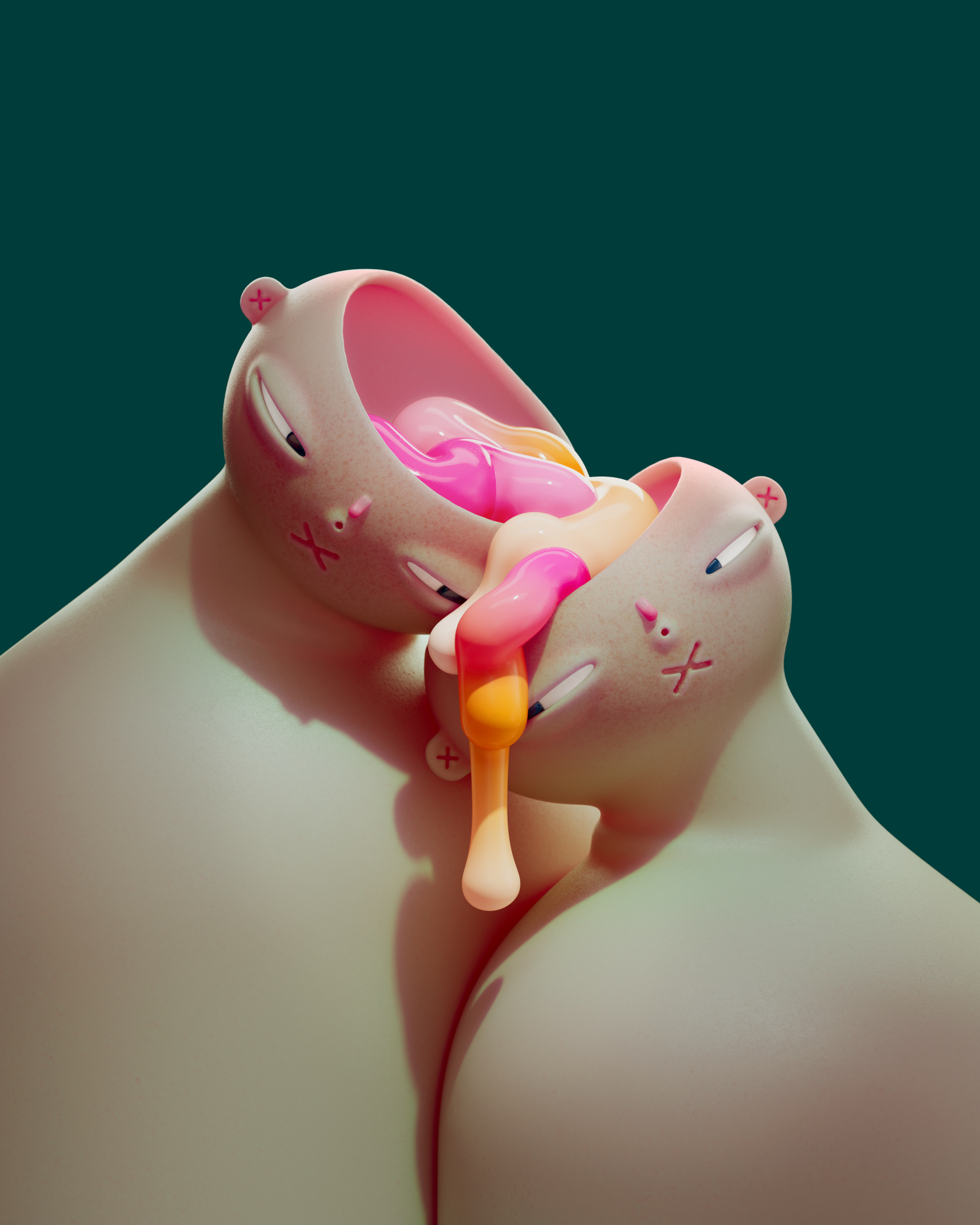
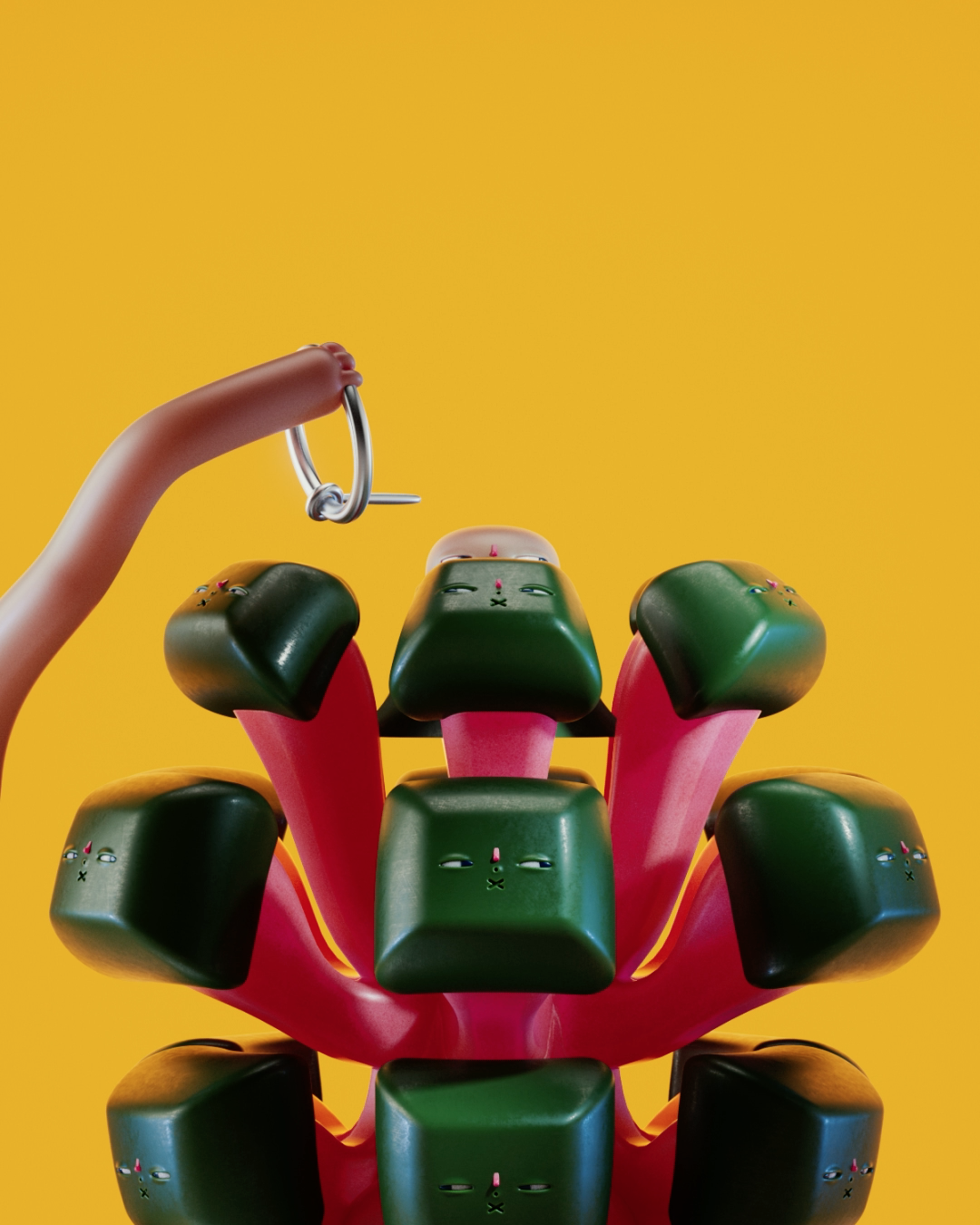
The difficulty is actually entering any space, being Artist in Brazil is not even an option, it is hard in its nature to survive, and when it comes to an edge new Space can be overwhelming. Most Brazilian artists in the NFT Space are somewhere in the world, so they already overcame that natural wall and are already inserted in some creative market. When a country has so many basic problems, Art is at the very bottom list of priorities, but it makes artists work harder and thrive, we find a way.
[CryptoArt] did open a new layer for my art to be exposed, made me feel more accomplished about some digital pieces having this bigger weight, the fact that creates rarity and giving it a final resting place in the blockchain. But besides the many good feelings it brought me, the Crypto scene created much more anxiety and frustration that sometimes I wonder if it is worth it at all, you start to get exposed to things that I feel are just too speculative and repetitions of old Art Galleries habits just disguised into different mechanisms.
I lived in Brazil most of my life, as much economically or geographically I might had have some disadvantages, I am lucky to have been exposed to the Brazilian Culture. It is just so rich and pulls from so many other cultures that I am a much more interesting artist, I am not afraid of using colors or being dramatic on my themes and it gives me a flavor nobody else has.
It is hard for me to tell, I left the country 11 years ago, a lot changed, a lot of heavy things happened and I feel culturally we suffered from this growth of obscure thinking in society. Growing up, I would always hear, Brazil is the country of the Future, we not only hold amazing nature and resources but culturally we are just a blast. That seed is in me, even not living there anymore, I will seed that message in my work, and I am proud of being active and relevant in the NFT movement as it is a revolutionary thing for Art, along with many other amazing Brazilian artists.
Growing up in Brazil exposed me to a huge variety of folklore which sparked my passion for the diversity of patterns, costumes and symbolisms. Myths are created to try to explain the universe and our place in it.
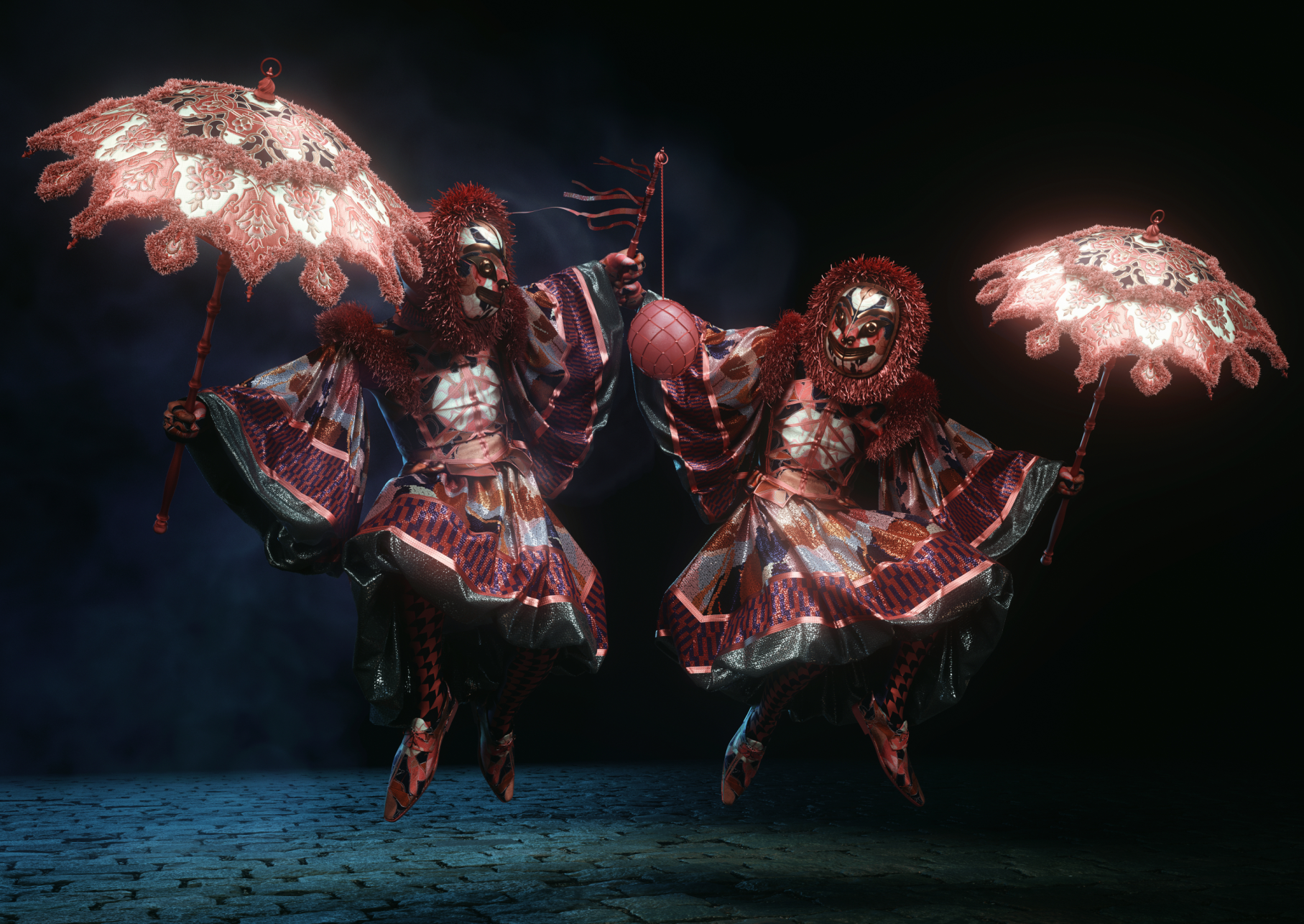
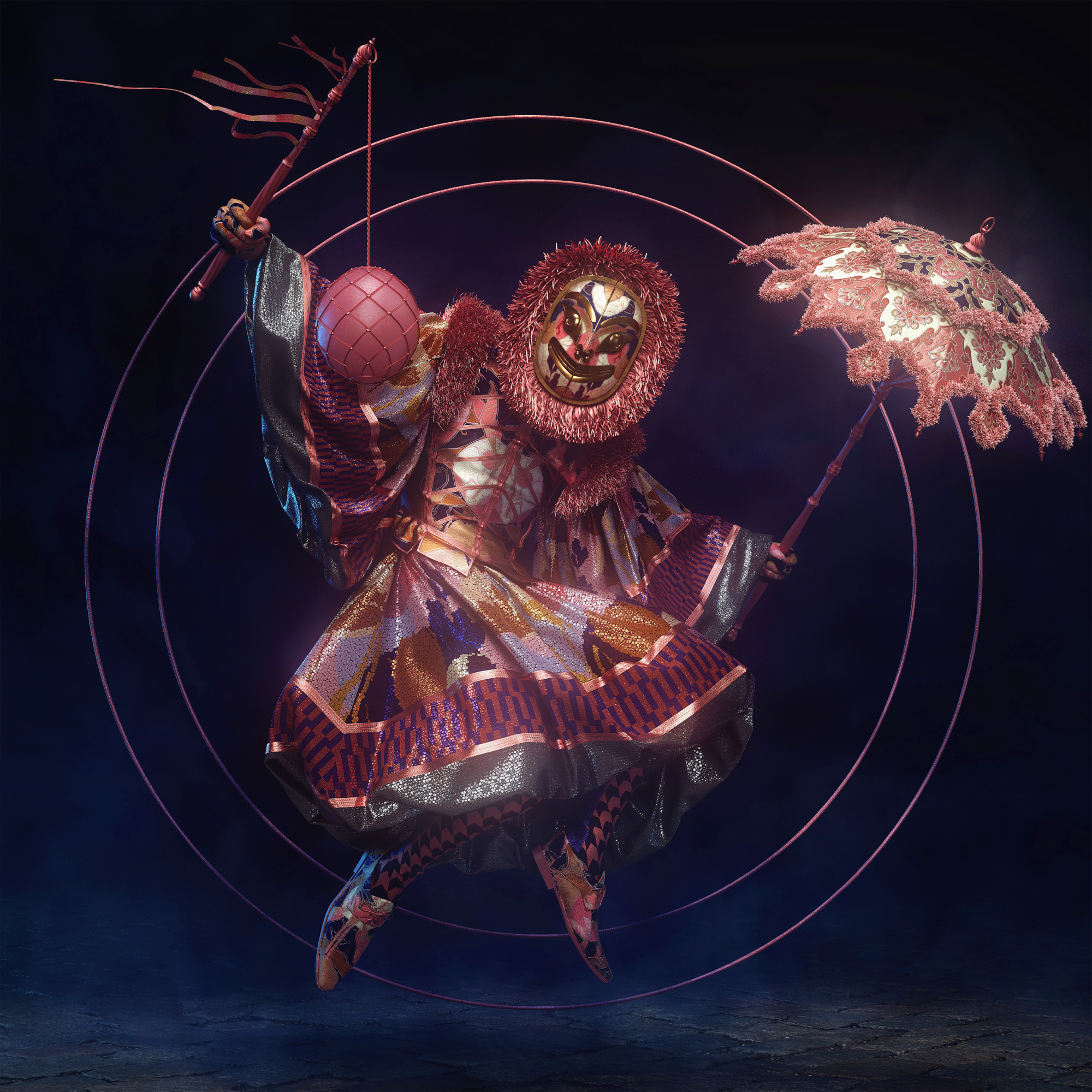
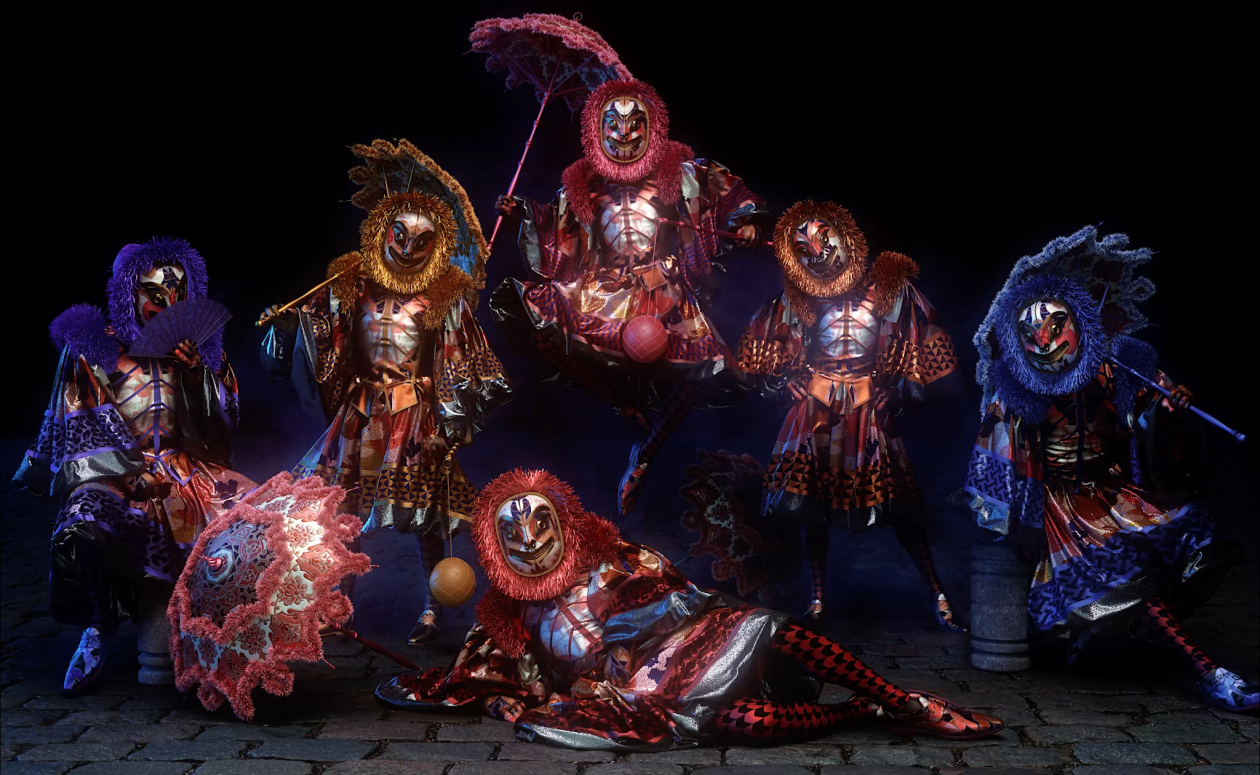
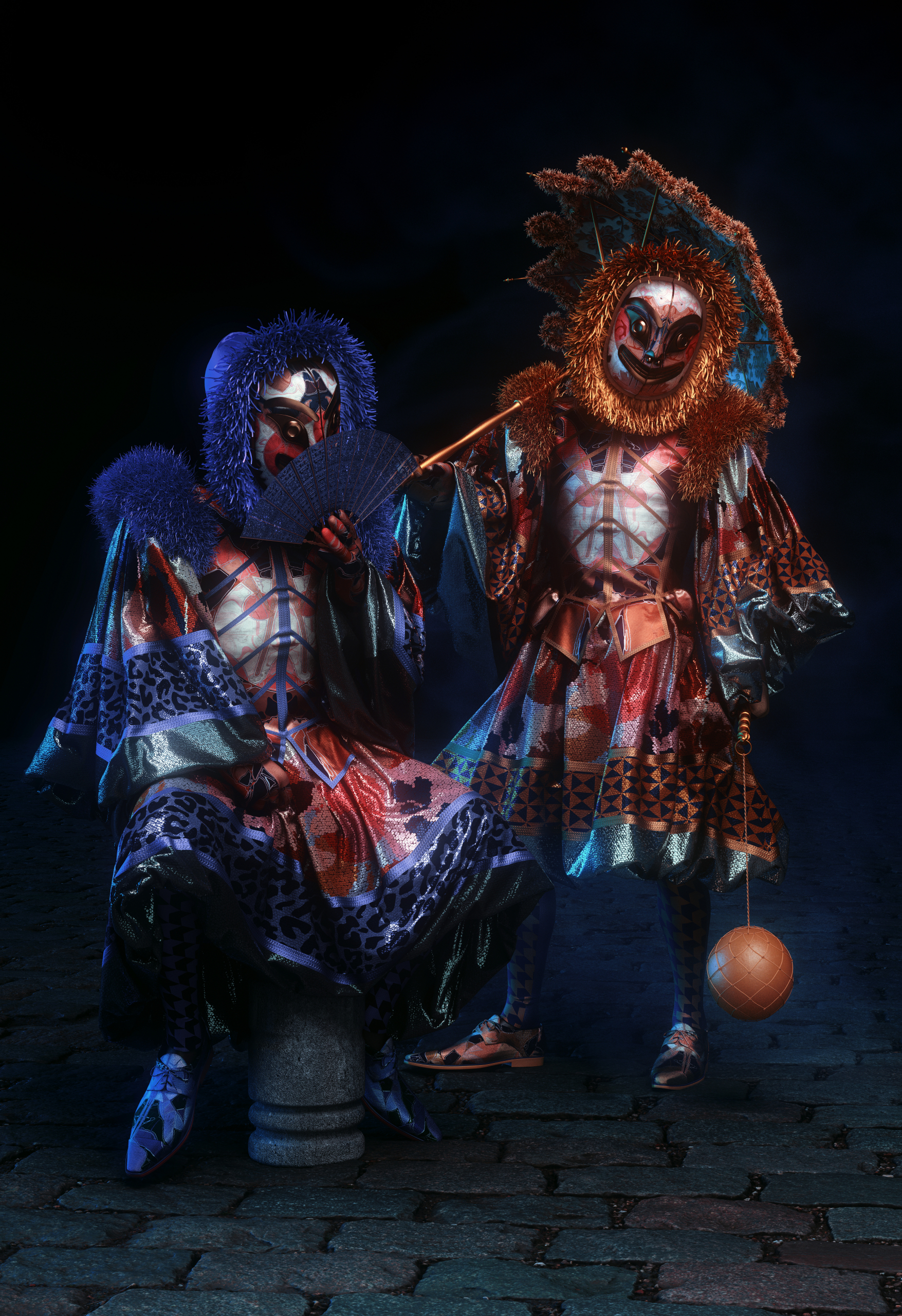
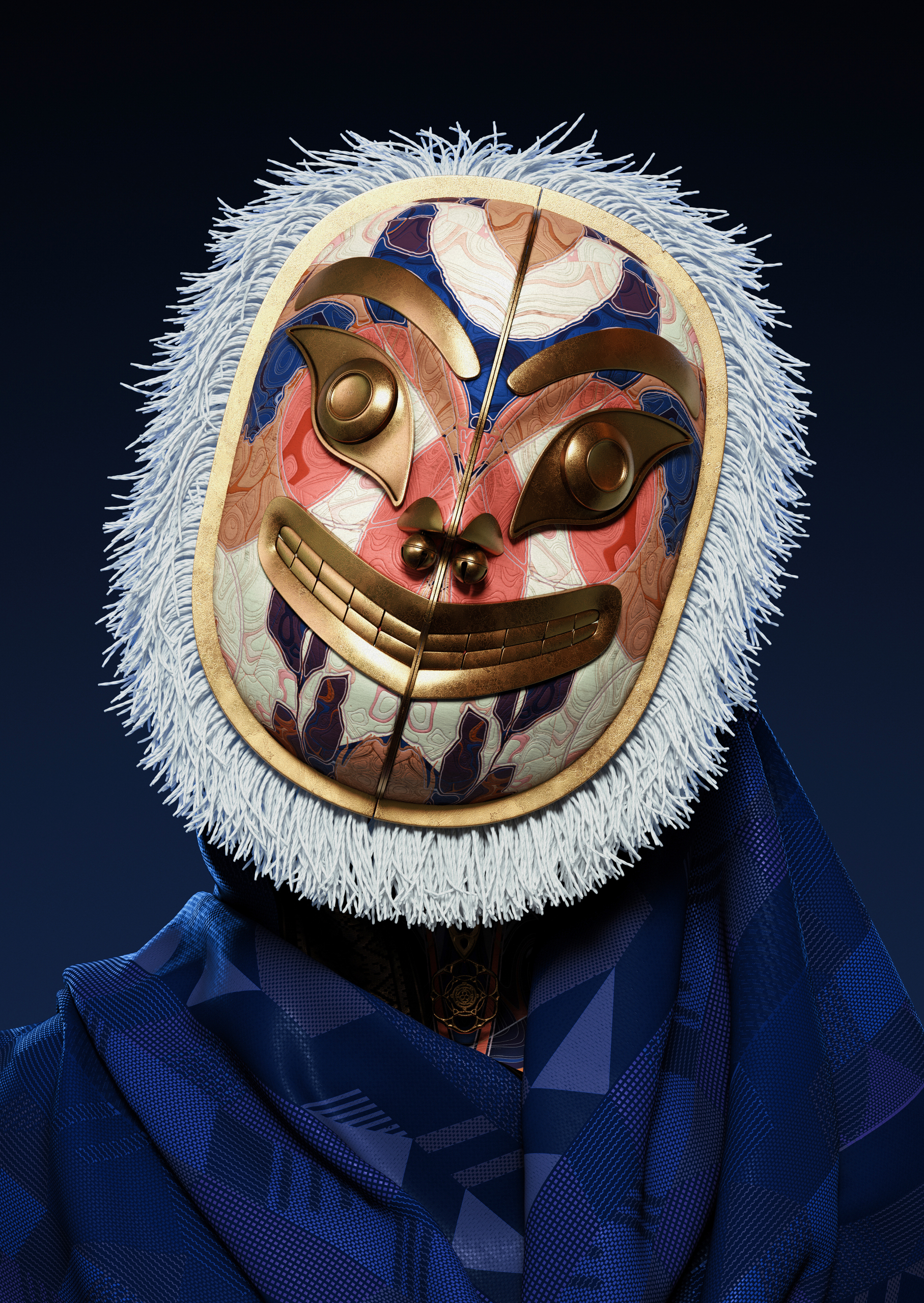
There are many barriers for artists from developing countries. The language barrier is probably one of the most evident along with the prices for gas fees and the difficult access to the crypto market.
I came across the NFT market last year while I was preparing to launch my career as an artist after 20 years working in the advertisement and entertainment industry. Because of the pandemic, I thought I had to postpone my plans. But as soon as I started minting my first pieces on SuperRare my work was recognized by a few OG collectors. This early recognition was really rewarding and life changing.
Growing up in Brazil exposed me to a huge variety of folklore which sparked my passion for the diversity of patterns, costumes and symbolisms. Myths are created to try to explain the universe and our place in it. This idea has always resonated with me and I’ve been drawn to folklore and myths as a study of ancient, exotic or even future cultures. I find it really fascinating to observe how aesthetics mix when there’s an encounter of cultures. That point of intersection is what inspires me the most.
Brazil has a huge potential for growth in this nascent market. A few platforms are starting to launch their NFT markets in the next few months. I think this will open up the doors for many established and fringe artists that are struggling to enter the international market.
In Brazil, Art is rooted in handicraft and in this my creation was enriched. The vibrant colors of handicrafts in Brazil, together with the shape of the °fuxicos” made up my main style with strong colors.

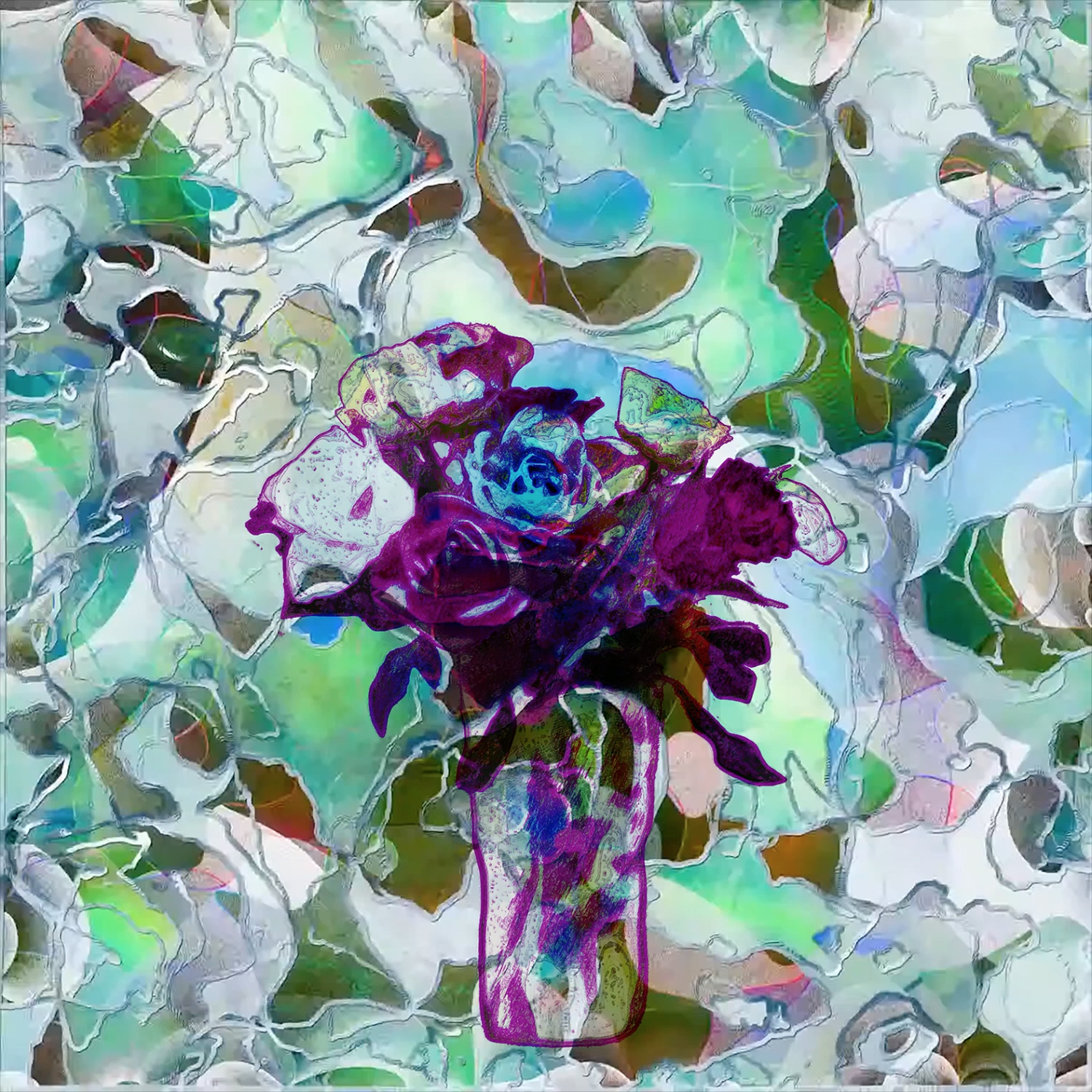
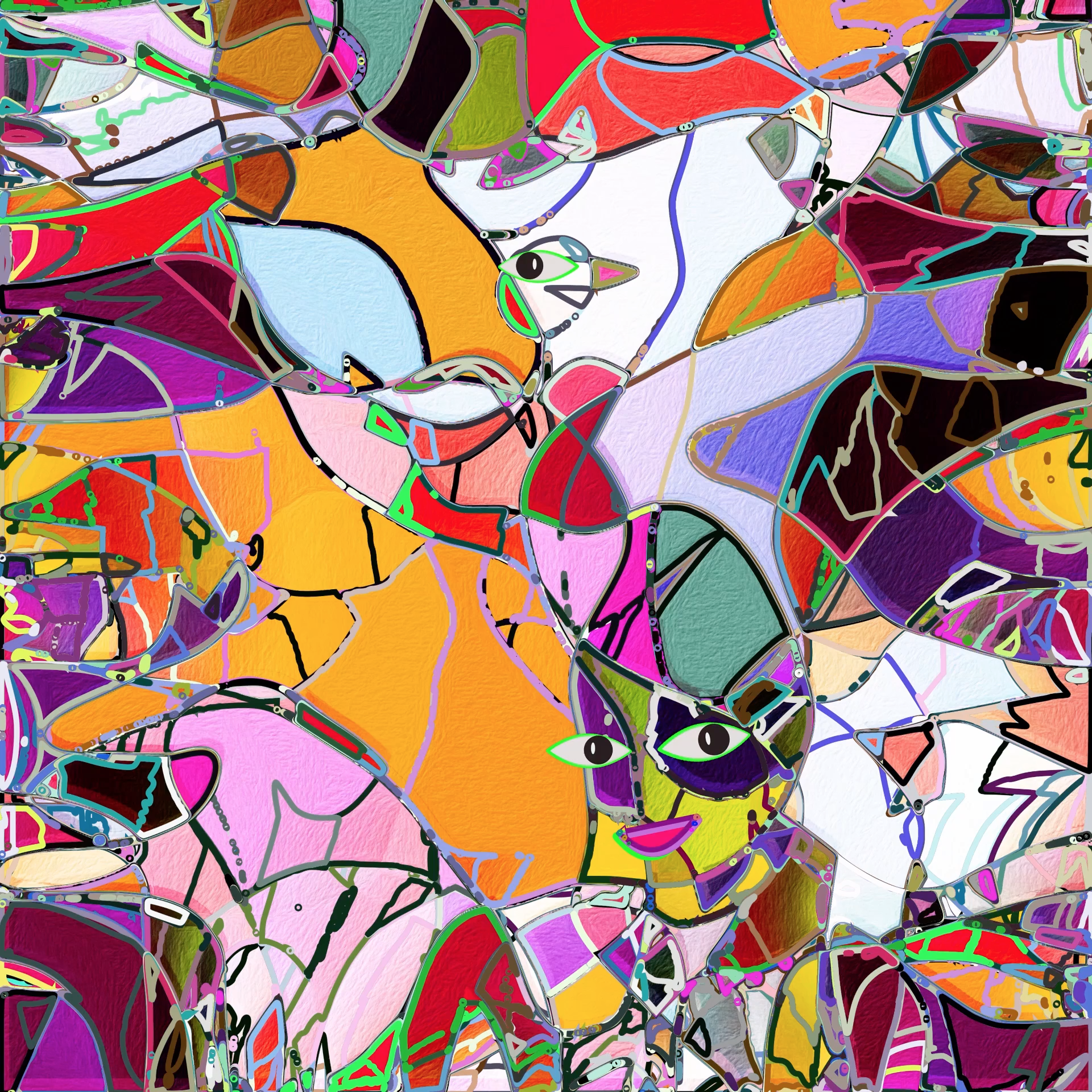
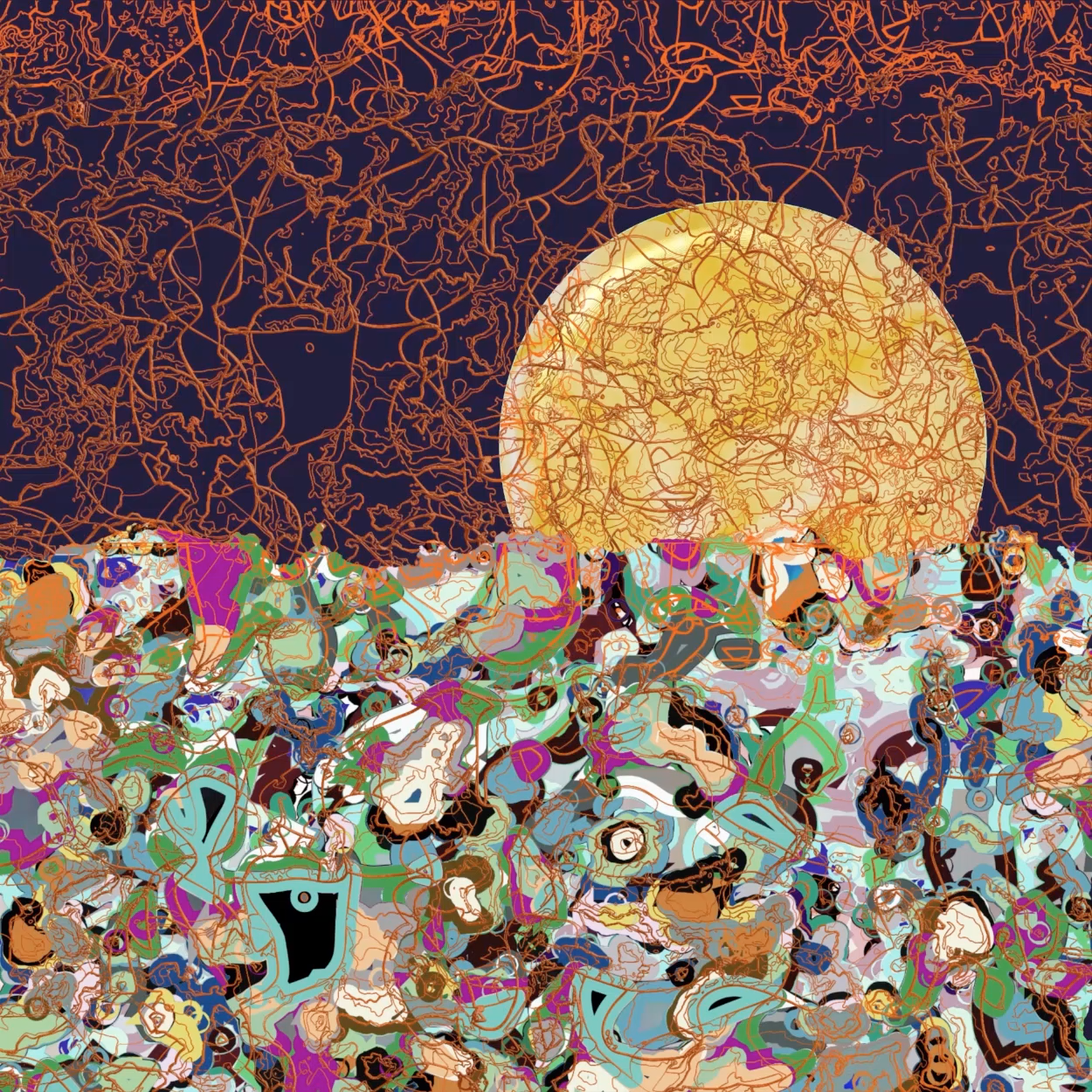
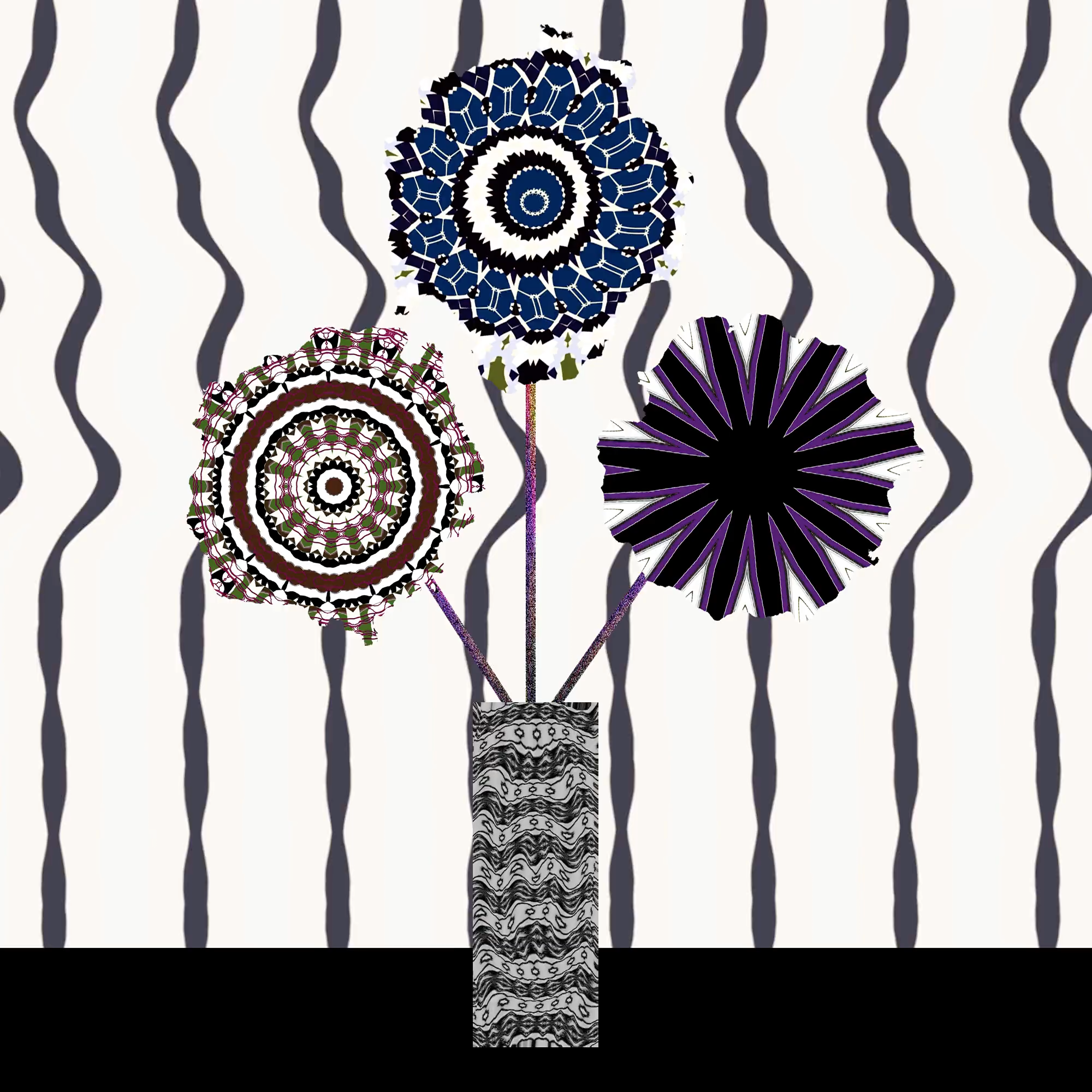
The main difficulties I see are the following: 1- Language, 2- Other cultural issues, 3- Technical issues, 4- Financial issues
1- Most Brazilians, for example, do not speak English, cannot even read a text and translators are often a real disaster. I have Brazilian artist friends who are outside the NFT world and they all have something in common: They don’t know English. Many Brazilian NFT platforms are emerging, but all of them are covered in English. So, they will always be left out and you will probably never meet them. Therefore, while I am in favor of greater decentralization, I also recognize the importance of the relevant role that galeries play in representing them in the world of CryptoArt. Because it is not only the difficulty of the language issue, but also technical and other cultural issues involved.
2- In Brazil, the knowledge culture is to get things easy. Someone needs to teach you! I’ve already sent to artist friends several video links to learn for themselves and they say they need a teacher and start firing millions of questions without even watching the video. I’m not like that, I got into CryptoArt early by simply chasing the information alone. I see many more Brazilian programmers in Cryptoart than real artists. It is a reality! Generative art can help artists in their creativity, but it has driven many who were never artists.
3- Another major difficulty is understanding the concept of decentralization and its consequences, together with all the necessary technical knowledge. You need to take care of your own wallet and take the risk, as there is no claim center to ask for your money back. You need to be very careful not to get ripped off. This responsibility brings a lot of fear. I know few Brazilians who are careful. There is an excessive confidence in others. Brazil’s NFT communities are growing very quickly and are helping each other, but in short it seems to be more a race for the money than for the art itself. This is perfectly understandable given the dismal financial state in which most find themselves. We all want, at the very least, to secure a livelihood.
4- Finally, another major barrier to enter NFTs into the Ethereum network space today is high fees. We have a variety of other platforms coming up, but some artists are so poor that even the minimum fee to be paid is too much, as the “Real” currency is currently highly devalued against the dollar. Others don’t even have a computer, just a Smartphone! So the financial issue is a big factor.
I am essentially a Crypto Artist since early 2019. I started in traditional and digital art in 2004 as an apprentice and I never stopped experimenting. I have lived in Germany since 2003 and until 2018 I still didn’t have a defined profession here in Germany. I majored in “Programming and Web Design” in 2011, but I was determined to just be an artist. I didn’t want to do anything other than art and I didn’t want to start my profession as an artist before studying a way to not have digital works stolen from the internet. Well, in 2009 I had a blog about digital art and found out that my images were stolen and didn’t even mention my name. So, for many years I had been looking for some kind of digital certification. I bought Hahnemühle certificates with holograms and they were registered on an internet website, but I was still not satisfied with them. I wanted maximum security, I was obsessed with it! So, in 2018 I went back to doing more research and found what I had been looking for for many years: The NFT world. CryptoArt is a total accomplishment for me! And I’ll explain a little more why: For anyone to be considered a professional artist in Germany, they need to prove it. So you can practice your profession with state support. Since 2019 I received state support through KSK (Künstlerozialkasse – Artists’ social fund) in Germany. It’s a social insurance system where they pay half of their pension and mandatory health insurance for professional artists. When you are not a graduate of an Art University, then you need to prove that you have talent and are capable of producing something extremely original, it cannot be something ordinary. You need to submit photos of your work to KSK’s commission along with proof of sales that you have reached the minimum required amount. In 2018 I submitted the entire form, but that year I had only sold one painting worth 300 Euros. So I wasn’t accepted. In 2019 I achieved exactly the minimum net profit amount required by KSK and in January 2020 I sent my NFT images along with all sales receipts. I was then quickly accepted! It was a great happiness to be considered a professional artist by KSK and recognized for talent, I’m proud of that! I owe it to all my collectors and to the SuperRare platform that welcomed me. Mainly to collectors Whaleshark and ModeratsArt who made a total difference. For example, the play “Boooo!!” https://superrare.com/artwork-v2/boooo!!-5966 (a humorous play in which I represented a collector’s claims in December 2019) which set a record at that time and was misinterpreted by many. I believe it was the key to this turning point in my life. To maintain this status, sales need to continue and this has not been difficult anymore.
In Brazil I had no artistic training. At the time nothing was accessible, there was no internet, books about art were inaccessible and even museums or exhibitions were rare. I was born and raised without the presence of formal art. However, something in Brazil is very strong, the handicraft. Here where I currently live, in Germany, handicraft is not considered Art, you don’t have any recognition for it. But, in Brazil, Art is rooted in handicraft and in this my creation was enriched. The vibrant colors of handicrafts in Brazil, together with the shape of the °fuxicos” made up my main style with strong colors. See my website https://www.melissaduarte.com/ . In the “fuxico” my heart lives, it portrays to me the “saudade” I feel for Brazil and my family. I’ve been living in Germany for 18 years and I had the opportunity to travel a lot and visit museums around the world, thus building an artistic education mixed with many cultures. Through internet research I got to know the Japanese art of Kirigami, which is very reminiscent of Brazilian “fuxico” and had a lot of influence on the construction of my flower vases. I develop a lot of different styles too as it enriches my spiritual side, art for me is therapy too. And I believe that being eclectic is a consequence of having lived in 3 different countries and having a busy life with constant changes. Today I live in a more stable period.
In the future, I believe that almost all of the aforementioned problems will be solved, overcoming all barriers from language difficulties, Blockchain terminology, security, financial and even cultural problems. For there will be enough material in all languages for everyone to understand, it is a matter of time. There will be professors, professional courses and even academic training in the area. Environmental issues will soon be resolved on all platforms as well through network optimizations. And financial problems will no longer be obstacles, as fees will reduce to very small amounts and even zero. In my view everything will become NFT in the future, even our bodies will be tokenized. We will all be digitized!
The exhibition is on view: DCL Art Week: Brazilian Artists on SuperRare
Visit it in Decentraland, SuperRare Museum of Art
Art

Curated Conversations: ALIENQUEEN
SuperRare Labs Senior Curator An interviews ALIENQUEEN about psychedelics, death, and her journey in the NFT space.
Tech


Out of the Vault and onto the Chain: the Evolving Nature of Provenance
SuperRare editor Oli Scialdone considers the social experience of provenance and its relationship with community in the Web3 space.
Curators' Choice



Curated Conversations: ALIENQUEEN
SuperRare Labs Senior Curator An interviews ALIENQUEEN about psychedelics, death, and her journey in the NFT space.



